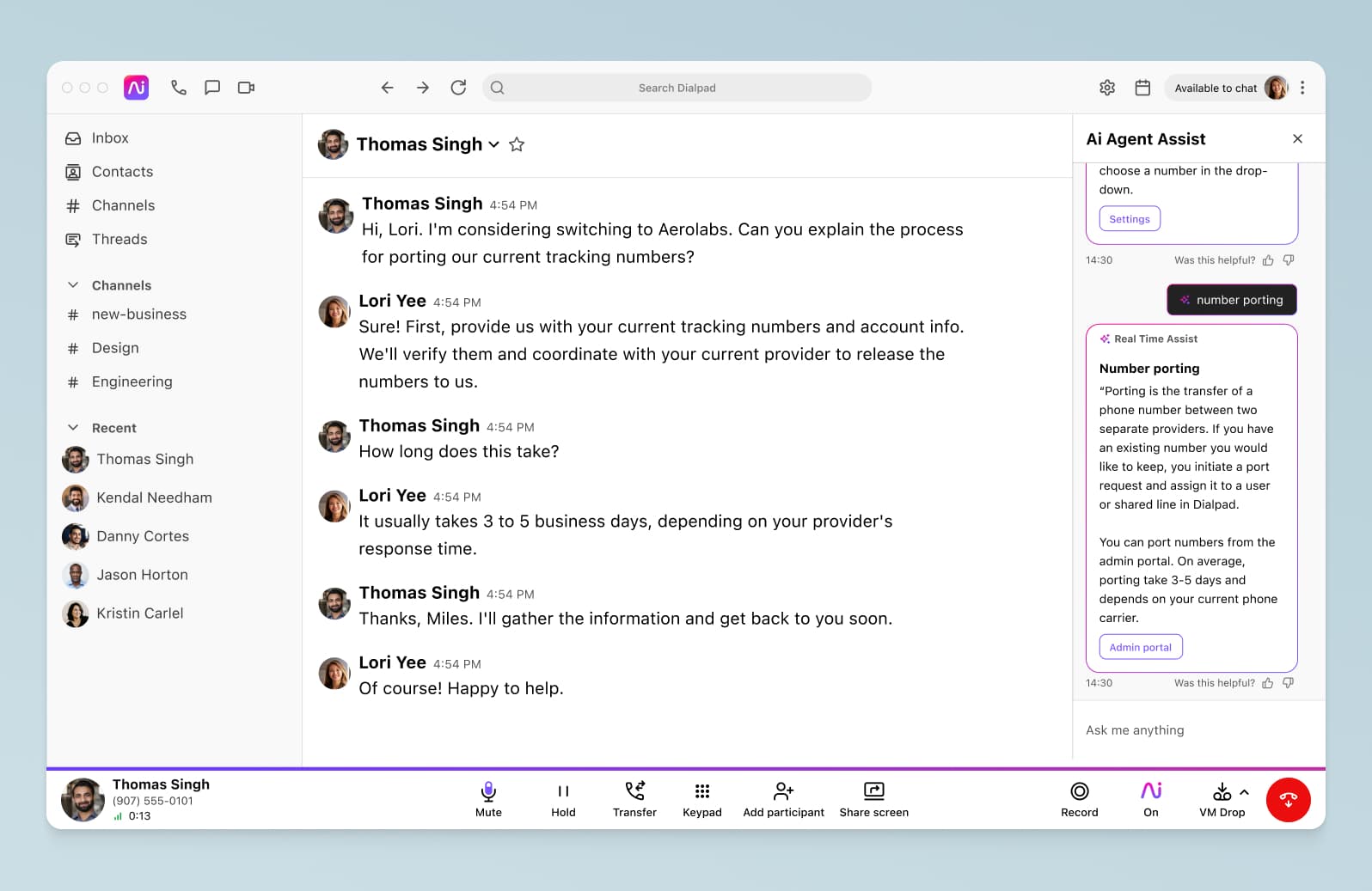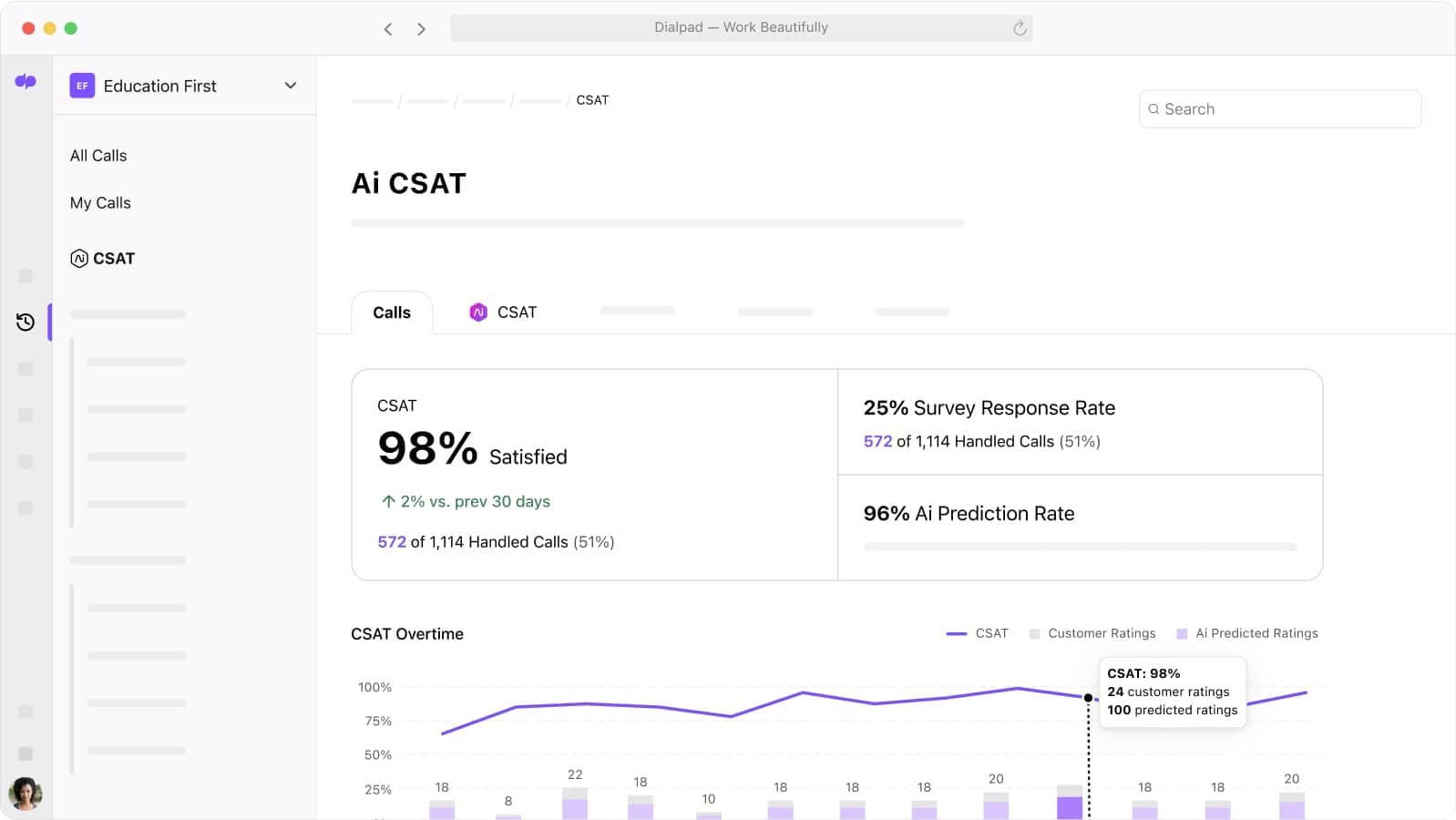Call avoidance in call centers: How to tackle it without burning agents out

SVP, Global Support Services

Tags
Share
Contact center agents are some of the busiest and most stressed employees in any business and industry. Because of this, it shouldn’t be surprising that agents will sometimes try to take fewer calls in order to have more time to decompress after a challenging customer call, or just to have a bit of a break between calls.
But call avoidance in call centers is a real phenomenon that negatively impacts not only productivity, but also morale and team culture. So, how can you combat it? That’s what I’ll dig into below.
What is call avoidance?
Call avoidance in contact centers is when agents try to take fewer incoming customer calls or inquiries, which often leads to long wait times, low customer satisfaction, and ultimately a poor customer experience. Like call center shrinkage, call avoidance can be a huge source of inefficiency for businesses with large customer-facing teams.
The negative impact of call avoidance on your business
Call avoidance can have a wide range of negative impacts on a business, like:
Decreased customer satisfaction
The most obvious negative impact of call avoidance is, of course, lower customer satisfaction. When customers' questions or issues take too long to resolve or are handled poorly, they’re left feeling frustrated and dissatisfied. This negative experience can lead to a decline in customer loyalty—and an increase in customer churn.
Damaged brand reputation
Whether your business gets reviews on third-party sites like Google Reviews and G2, or social media channels like LinkedIn and Facebook, poor customer service due to call avoidance can seriously impact your company's reputation.
Dissatisfied customers are more likely to share their negative experiences with their friends and networks through word-of-mouth, social media, or online reviews, which can deter other potential customers from buying products or services from you.
Reduced customer retention
Call avoidance can also contribute to a higher customer churn rate. If customers consistently don’t receive the support they need from you, they will eventually look at alternative solutions or switch to competitors who provide better service.
Increased operational costs
As a business leader, you’re responsible for your business unit’s impact on the bottom line. When agents avoid calls, the ultimate impact is often higher operational costs because dissatisfied customers tend to escalate their issues, which results in more complex and time-consuming interactions with managers and supervisors to resolve what initially was a small problem.
Poor employee morale
Even if you’ve got just one agent exhibiting call avoidance, it can create an imbalance in workload distribution among the rest of the team. Some agents will be overloaded with calls when others avoid their fair share, which leads to inefficiencies, agent burnout, and employee turnover.
Call avoidance tricks: Spot when agents are dodging customers
You should regularly inspect your call center shrinkage to spot agents that have a high shrinkage in comparison to the goals and/or other agents. A customer support leader can spot call avoidance behavior and identify agents who are dodging customers through a few strategies and monitoring methods. Here are some effective approaches:
Call monitoring
Regularly monitor and review recorded calls, and/or conduct live call monitoring to assess your contact center’s agent-customer interactions.
A few signs to look for include agents rushing through calls, avoiding specific types of inquiries, or transferring calls unnecessarily.
Call analytics
Your customer engagement software should have built-in analytics or call center dashboards that help you track metrics or key performance indicators (KPIs) related to call handling.
You can look at call duration, call abandonment rate, and transfer rates—unusually low call durations or high transfer rates may indicate call avoidance behavior. For example, Dialpad has a clean analytics dashboard that shows us all of these key metrics like missed and abandoned calls, and even which keywords are popping up most frequently in customer conversations:

Also, review individual agent performance metrics regularly and look for patterns of consistently low call volumes, high call transfers, or a disproportionate number of shorter calls, which is often a sign of call avoidance behavior.
Review customer feedback
Besides your own contact center analytics, your customers are another great source of insight when it comes to spotting call avoidance behavior.
If you aren’t doing this already, you should be gathering customer feedback through methods like post-call surveys, customer satisfaction or CSAT surveys, and online reviews.
Consistently low CSAT scores or negative feedback related to agent interactions could be a sign of call avoidance. (You need to actually see that qualitative feedback though, to get more context behind any low scores. A low CSAT score by itself isn’t necessarily a result of call avoidance behavior.)
Of course, as any customer support leader knows, one of the biggest challenges with collecting customer feedback like CSAT scores is that not a lot of people actually fill out those surveys.
In fact (depending on the industry and specific business of course), we've found that on average only about 5% of customers actually fill out CSAT surveys. (Our SMS CSAT survey feature gives this a bit of a boost and gets on average about a 22% return rate.) On a related note, usually only the angriest—and happiest—customers actually bother to respond to these surveys, which means your CSAT answers are likely to be very skewed and not representative of how your customers feel overall.
Dialpad's industry-first AI CSAT feature is designed to solve exactly that by inferring CSAT scores for 100% of our customer calls. The result: a much more representative sample size for CSAT scores, and a more accurate understanding of how satisfied your customers really are:

Be attentive during coaching and training sessions
A good contact center leader should have some idea of how their agents are performing, even if they’re not poring over their call center KPIs every day—your one-on-ones and weekly or biweekly meetings with team members are a valuable opportunity to understand how they’re doing and where they may need help. Don’t waste them.
Have a quality assurance program in place.
Implement a contact center quality assurance (QA) program to assess agent-customer interactions objectively based on predefined criteria.
For example, you could develop a QA strategy to measure agents’ product knowledge, empathy, and even adherence to compliance or other company processes. From a call avoidance perspective, you could add scoring criteria that require agents to not skip certain steps when helping customers with troubleshooting, for example.
More sophisticated or larger businesses will usually have a specialized QA team that reviews calls and does QA scoring to evaluate agent performance against these requirements (“did the agent greet the customer and ask how their day is going?”) and provide feedback for improvement.
This can be challenging if you run a large contact center or if you don’t have a large QA team, but there are contact center AI features that are really helpful for this.
For example, we use Dialpad’s AI-powered QA scorecards feature to automate scoring and analysis, which empowers our leaders to provide more consistent and focused coaching to agents:

This program can help identify areas where agents may be avoiding calls or lacking in their support.
How to write a call avoidance policy and implement it successfully
A good call avoidance policy will empower your team to create an efficient and customer-centric support operation while still ensuring agent satisfaction and adherence to best practices. Here are some of the key elements that I’d include if I were writing a policy today:
1. Agent training and onboarding
Develop a comprehensive training and onboarding program for new agents.
Ensure agents are confident in handling the types of issues they will encounter.
Centralize knowledge resources for quick access to information in real-time.
2. An omnichannel approach
Implement an omnichannel strategy to direct customers to the right team from the start.
Prioritize live channels for critical issues and use web channels for lower-severity problems.
Utilize skills and priority routing to match customers with the most suitable agents.
Encourage self-service options to empower customers to find answers independently, reducing agent workload and wait times.
3. Clear expectations
Clearly define the customer journey and specify when to choose a particular support channel or team.
Communicate expectations to agents for each channel, including acceptable and unacceptable behaviors.
Establish a reward and recognition program to incentivize desired behaviors among agents.
4. Metrics and monitoring
Implement a robust set of metrics and dashboards to monitor call avoidance and other key performance indicators.
Integrate these measurements into your quality assurance program.
Continuously reinforce desired behaviors through regular employee feedback, team meetings, and quality coaching.
Adopt a call avoidance strategy to improve customer experience AND support your agents
By implementing the strategies I discussed earlier, you can effectively address call avoidance, improve agent performance, and increase overall customer satisfaction.
From providing comprehensive training to leveraging innovative technologies like Dialpad Support, there are many ways you can minimize call avoidance in your contact center operations.
Learn about how Dialpad’s unique contact center AI features are designed to help with this by taking a product walkthrough with our team!
Get a hands-on look at Dialpad with our team
Check out contact center teams are using Dialpad's AI-powered customer engagement platform to reduce call avoidance and empower both agents and supervisors to work more productively. Book a demo, or take a self-guided interactive tour of the app first!
